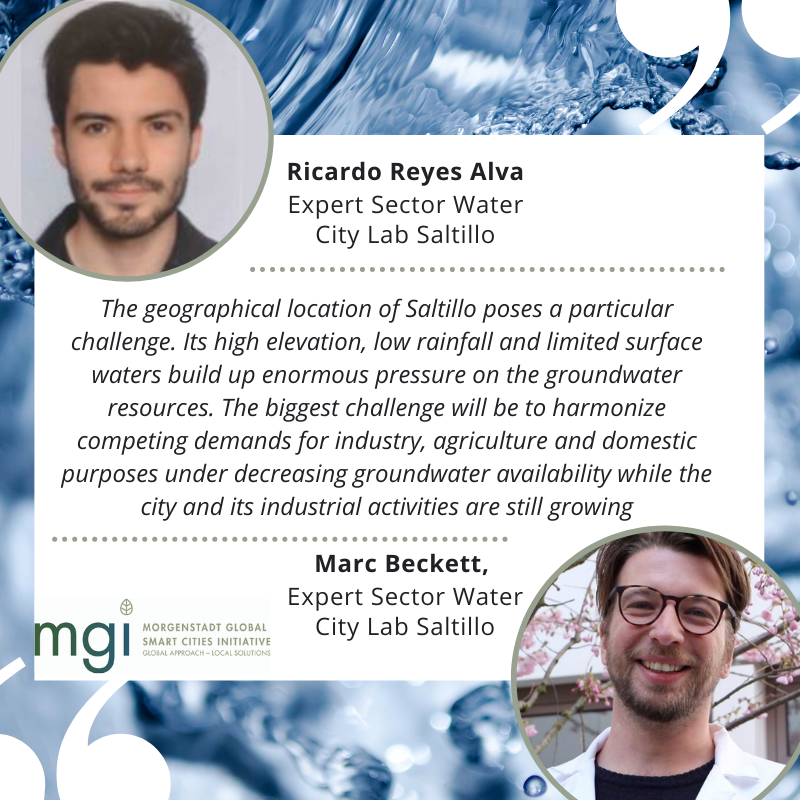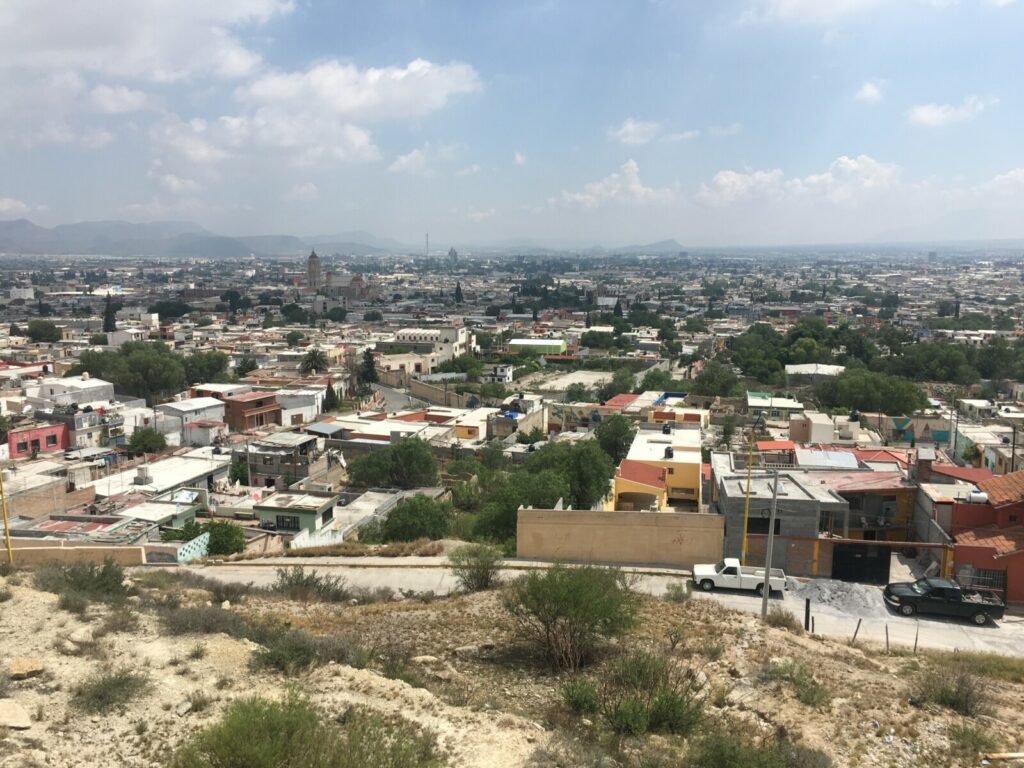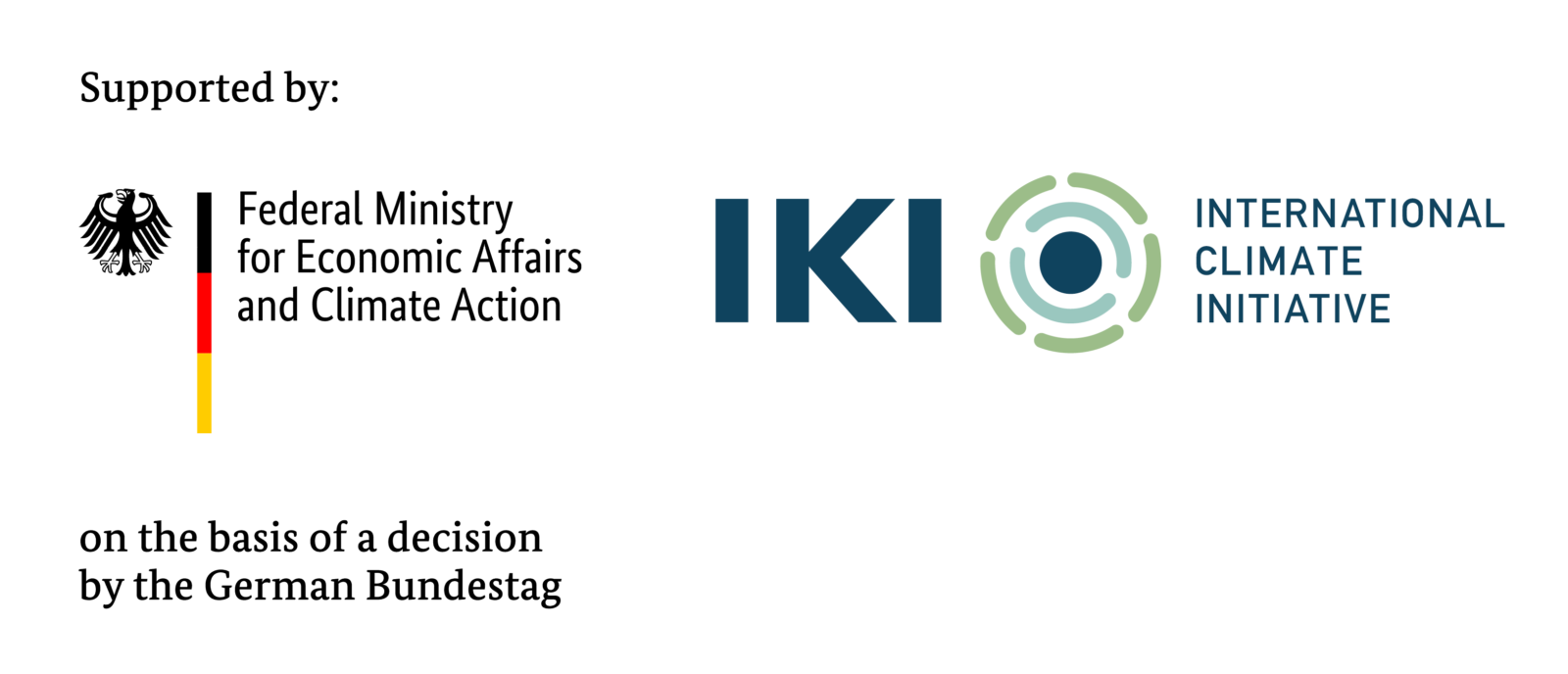Interview with the Water Experts of the City Lab Saltillo
Marc Beckett, Innovation Field Water Technologies and Resource Recovery at Fraunhofer Institute for Interfacial Engineering and Biotechnology (IGB)
Ricardo Reyes Alva, Innovation Field Water Technologies and Resource Recovery at Fraunhofer Institute for Interfacial Engineering and Biotechnology (IGB)

As central element of life on earth, water in its various forms is deeply connected to climate change impacts. According to the UN world water development report 2020, around 74% of all natural disasters between 2001 and 2018 were water-related. Melting glaciers have long become the symbol for global warming illustrating the massive impact local phenomena have on global climate. For Conducting research and finding respective solutions for sustainable water management in terms of preserving resources and promoting climate protection, every occurrence and state of water from the weather conditions down to human usage has to be included.
For these reasons, the water sector has been chosen as focus area in all three pilot cities of the Morgenstadt Global Smart Cities Initiative (MGI). The local circumstances of Kochi (India), Saltillo (Mexico) and Piura (Peru) each put unique demands on driving sustainable urban development. To learn more about the challenges and opportunities in each city, we asked the MGI water experts to grant us some insights into their work in the MGI City Labs.
Q.: Please elaborate on the method for identifying the sector water and on the reasons for concentrating on this particular sector in Saltillo.
The first step of the Morgenstadt Methodology involves a high-level city assessment of 28 indicators from various backgrounds of the city and its society. The results of the analysis suggested that the water sector would be relevant for detailed investigation in the City Lab. Saltillo is located in a semi-arid region and climate change impacts are expected to exacerbate water insecurity and flooding events at the same time. In addition, the city has a growing population and manufacturing sector and thus the decision to include the water sector in the analysis was made during the Kick-Off Meeting.
Q.: Which are the most important factors playing into water management in Saltillo? What are special challenges and opportunities in the city when it comes to Water?
The geographical location of Saltillo poses a particular challenge. Its high elevation, low rainfall and limited surface waters build up enormous pressure on the groundwater resources. This circumstance leads to unsustainable overexploitation of aquifers and competing demands for industry, agriculture and especially for domestic purposes. The biggest challenge will be to harmonize these demands under decreasing groundwater availability while the city and its industrial activities are still growing. The search for alternative water sources in the city is identified as an important element for increasing water resilience.
Another challenge arises from the vast horizontal expansion of the city dwellings. It causes the need for water providers to enhance their efforts to maintain and expand a long water supply and sewer network, which increases the risk of water losses.
Moreover, there are around 30 water streams in Saltillo, all of which are currently in a poor ecological state, mainly due to critical pollution. In addition, their natural courses have been modified or completely blocked by the development of dwellings. Therefore, the natural drainage capacity of this bodies has decreased, which significantly contributes to the occurrence of flooding events within the city.
Further, the low annual rainfall over a short period of time within the year makes it difficult to justify a comprehensive rainwater collection scheme. While these are significant challenges, they also hold great opportunities.
Especially the reclamation of treated effluent from the wastewater treatment plants is a great way to increase water security in Saltillo. Substitution of treated effluent for non-potable water uses (e.g. industrial water use, irrigation etc.) can reduce the fresh-water abstraction and reduce pressure on groundwater sources. First steps have been undertaken with the Linea Morada (Purple Line) to reuse municipal effluent as service water in the adjacent industrial parks.
Saltillo’s water and wastewater infrastructure is quite comprehensive, which allows for an expansion of this scheme if additional treatment steps would be implemented to ensure high-quality effluent. Design capacities of the Wastewater Treatment plants are not fully exploited yet and would leave more room for future connections. Great opportunities also arise from the strong presence of the local water companies, which also have a good reputation in the city. As implementing and operational stakeholders, they pose a great asset for future measures. Additionally, the analysis showed that for many important aspects of the water sector sufficient water data is available (e.g. on groundwater, on water supply system, etc.) which is a great asset for identifying projects to promote climate change adaptation in the water sector of Saltillo.
Q.: Which strategies and tools are/will be used to find innovative solutions related to water for improving the city’s sustainability profile and resilience towards climate risks?
The list of indicators and action fields related to the water sector in Saltillo is very comprehensive in order to assess the current state and future potentials as holistically as possible. The cooperation with the local stakeholders like Aguas De Saltillo, IMPLAN, municipal entities, and industry representatives is very fruitful to understand the current status of water in Saltillo as well as its challenges and opportunities. Especially the industrial stakeholders play an important role since the manufacturing industries in Saltillo rely on a stable water supply for future operations.
Many interviews have been conducted with stakeholders from this group as well as with public agency representatives. Together with the expert team from the Tec de Monterrey the interviews targeted different stakeholder groups in order to identify common visions and distinctions on the way to realise them.
Furthermore, the Municipal Development Plans and initiatives have been analysed in order to identify strategies that are already being discussed and which can be complemented or supported by the outcome of the City Lab. A strong focus in the ideation process was the consideration of potential synergies with other sectors, such as Energy and Mobility in order to maximise the positive impacts of all projects. Based on the conducted analyses and interviews the Water Team developed a series of suggestions for implementable pilot projects that can contribute to climate change mitigation and adaptation in Saltillo. The project proposals were presented to the stakeholders in Saltillo during an online workshop and are currently being evaluated for further exploitation.

Q.: Are there tangible examples for solutions or projects in the sector water, yet?
The project development followed a co-design process. The stakeholder interviews revealed many valuable insights that contributed to the proposed projects. With regards to water, the potential for climate change mitigation is somewhat challenging since the water sector contributes fewer emissions than other sectors. Apart from the electricity used for conveying and treating water and wastewater there is some potential to optimize wastewater treatment processes with regards to emissions of methane or nitrous oxide, which have a larger global warming potential than CO2. In water, we often think more of the adaptation to climate change. In Saltillo a tangible example for solution would be the promotion of water reclamation from wastewater treatment plants by continuation of the “linea morada” for industrial water use and for irrigation of public spaces.
Further, upgrades to the sewer networks would be required though as well as additional treatment steps at the wastewater treatment plants. In addition, the promotion of subsurface irrigation, for example in public spaces, can reduce water demand. Potential solutions to address water in Saltillo also involve digital and infrastructure innovation across multiple sectors. For example, promotion of smart buildings or neighborhoods, that combine renewable energy with water saving appliances in public buildings and households can promote water savings and reduced energy consumption for pumping and heating. These projects can work as lighthouses for further replication. An important role is also attributed to the promotion of green infrastructure within the urban development. Urban green has positive impact on the climate in the city lowering the need for air conditioning and thus electricity. Green spaces often fulfill multiple functions, such as higher water retention, groundwater recharge and cooling, but also invite people to spend more time in that area. Combined with sustainable mobility services one could imagine green corridors for bike highways, walking trails and urban recreation.

